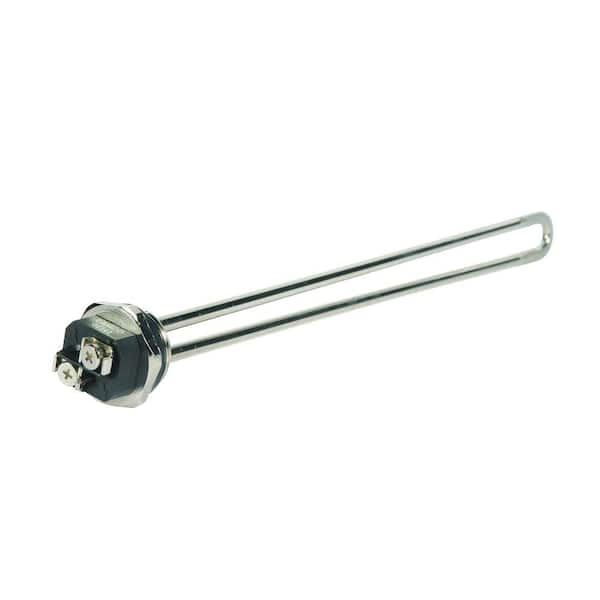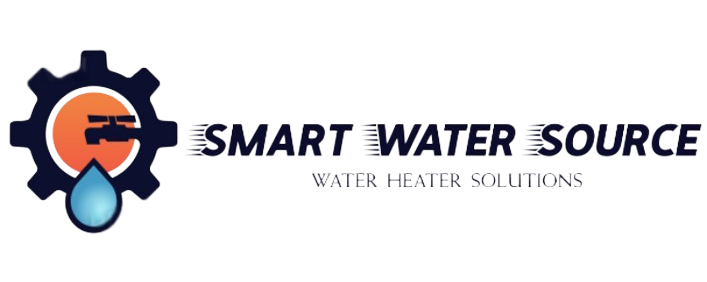Are you staring at a chilly shower while pondering if a quick fix is possible? When your water heater starts acting up, the question of whether water heater elements are interchangeable is more than just a passing thought—it’s a potential solution to your problem.
You might wonder if swapping parts is a straightforward task or a jigsaw puzzle of plumbing challenges. This article will uncover the truth behind interchangeable elements and what it means for your water heater woes. Understanding this could save you time, money, and a lot of frustration.
Stick around to discover if you can mix and match parts to revive your heater, ensuring those morning showers stay warm and welcoming.
Page Contents
Types Of Water Heater Elements
Screw-in elementsare common in many water heaters. They look like a metal tube. This tube screws into the heater. You need a wrench to remove them. They come in different sizes. Small ones work for small heaters. Large ones fit big heaters. They heat water fast. That’s why people like them. Easy to replace too. Just unscrew the old one. Then screw in the new one. Most people can do this themselves. Saves money on repairs.
Flange elementsattach with bolts. They look different from screw-in types. A flat metal plate holds them. This plate is called a flange. It bolts onto the heater. Bolts can be tricky to remove. You may need help from a plumber. Flange elements are less common. Some heaters only use flanges. They are strong and durable. Perfect for heavy-duty use. Flange elements last a long time. But when they fail, they need proper tools to replace.

Credit: www.homedepot.com
Materials Used In Elements
Copper elements are common in water heaters. Copper conducts heat well. It heats water quickly. These elements are affordable. They don’t last as long. Hard water can cause problems. It damages copper elements. Regular checks are important. Change them if needed.
Stainless steel is strong. It lasts longer than copper. These elements resist rust. This makes them a good choice. They work well in different water conditions. They cost more than copper. But they offer better durability. Choose stainless steel for long-lasting use.
Incoloy elements are very durable. They handle high temperatures well. These elements resist corrosion. Ideal for very hard water areas. They are the most expensive. But they last the longest. Investment in Incoloy means fewer replacements. They give peace of mind.
Compatibility Factors
Water heater elements need matching voltage. Common voltages are 120V and 240V. Using the wrong voltage can cause damage. Always check the label on the heater. It tells you the correct voltage. Safety first to prevent accidents.
Elements have different wattage ratings. This affects how quickly water heats. High wattage heats faster. But it uses more electricity. Match wattage for best performance. Wrong wattage can lead to inefficient heating.
Elements come in various sizes and shapes. Physical dimensions must fit the water heater. Length and thickness are important. Measure old elements before buying new ones. Correct size ensures proper fit and function.

Credit: www.amazon.com
Signs Of Element Failure
Water doesn’t stay hot. It might get lukewarm. Then cold. This means the heater element is failing. A working element keeps water hot. An inconsistent temperature means trouble. Check your water heater soon.
Cold water flows. No warmth at all. This is a big sign. The element might be broken. Without it, the heater cannot work. You need to replace the element. This problem needs fixing fast.
Look at the element. Is it broken or burnt? These are clear signs. An element with damage won’t work well. It might have cracks or rust. Visible damage means it’s time for a new one. Inspect it regularly.
Steps To Replace Water Heater Elements
Turn off the power supplybefore touching the heater. Wear glovesto protect your hands. Ensure the area is dryto avoid electric shocks. Check for gas leaks if using a gas heater. Keep kids away during the process.
- Wrench– to loosen and tighten bolts.
- Screwdriver– to remove the panel.
- Voltage tester– to check electric flow.
- Bucket– to catch any water spills.
- New element– for replacement.
Drain water from the heater. Use a wrench to remove the old element. Place the new element in the slot. Tighten with the wrench. Check for leaks. Restore power and test the heater. Ensure it heats water well.
Pros And Cons Of Interchanging Elements
Interchanging water heater elements can save money but may reduce efficiency or lifespan. Compatibility issues might arise, affecting performance. Consider specific model requirements to ensure proper fit and function. Proper installation safeguards optimal operation and minimizes risks. Always consult a professional to avoid damage or hazards.
Benefits Of Interchangeability
Easy replacementcan be a big benefit. If one element breaks, you can switch it easily. This saves money and time. No need to buy a new water heater. Also, it helps in situations where the same model is not available. You can find a similar element and use it. This way, you avoid long waiting timesfor the right part. It is also useful for people who fix things themselves. They can use different elements to test which works best. This flexibility is helpful.
Potential Risks
Different elementsleaks or damage. Some elements may have different power ratings. Using them can lead to overheatingor not enough heat. Water may not warm up as needed. Elements not made for your heater can wear out faster. This means more frequent replacements. Safety issues could arise if the element does not match the heater’s specifications. Always check before making changes.
Maintenance Tips For Longevity
Check water heater elements every few months. Look for rust or damage. Use a flashlight to see better. Make sure connections are tight. Loose parts can cause trouble. Listen for strange noises. These can be warning signs.
Turn off power before cleaning. Safety first! Use a soft cloth to wipe elements. Remove any dust or debris. This helps them work well. Use vinegar to clean hard water build-up. Let it sit for a while. Then rinse and dry.
/replace-the-heating-element-water-heater-1824886-11-082cb081cf2740fca47a30001cb701a1.jpg)
Credit: www.thespruce.com
Conclusion
Understanding water heater elements can save you time and money. Not all elements are interchangeable, so check compatibility first. Using the wrong element can cause damage or inefficiency. Always consult a professional for advice when unsure. Safe installation is crucial for proper function.
Water heaters need the right parts to work efficiently. Regular maintenance extends their lifespan. Remember, a well-maintained heater provides consistent hot water. Keep these points in mind for future repairs or replacements. Proper knowledge ensures your water heater runs smoothly and safely.
Stay informed for the best home solutions.
